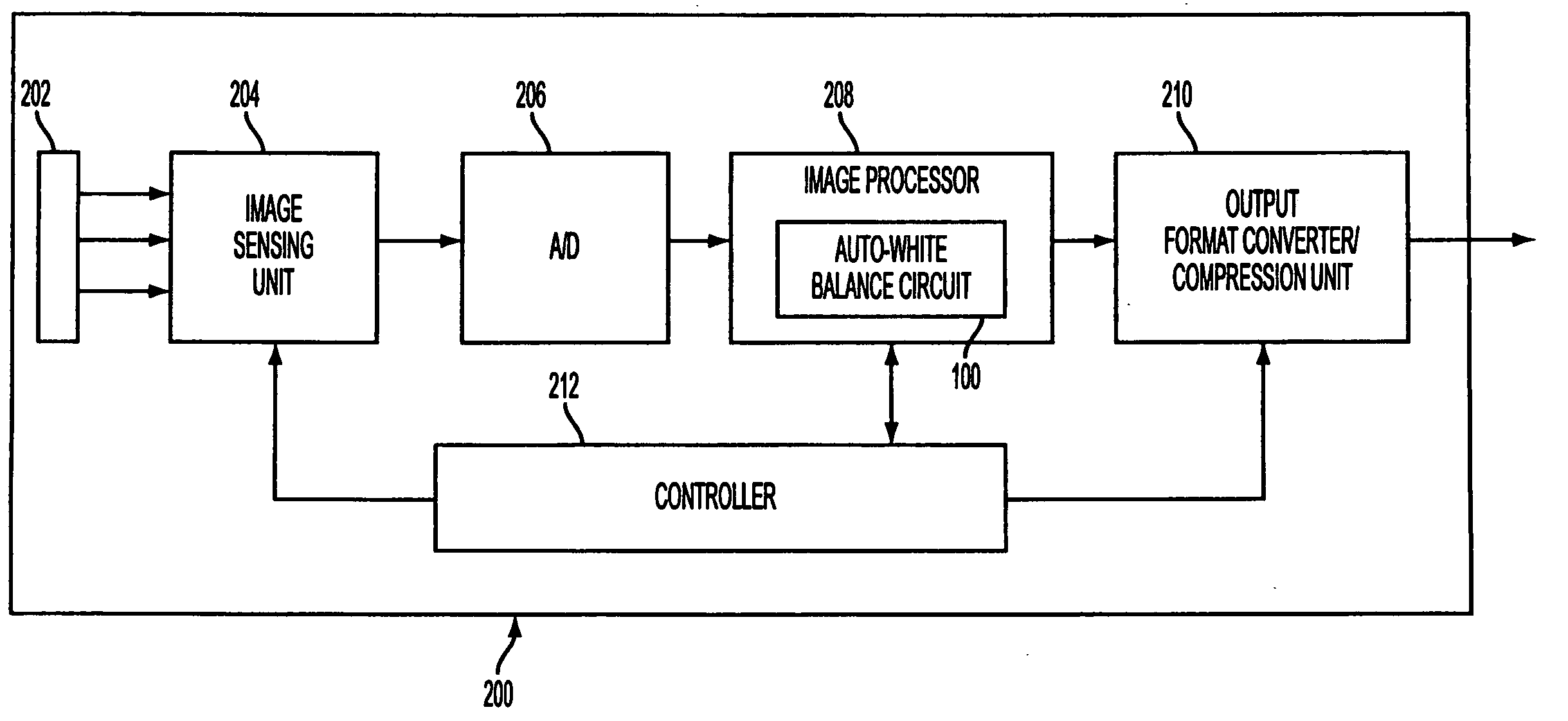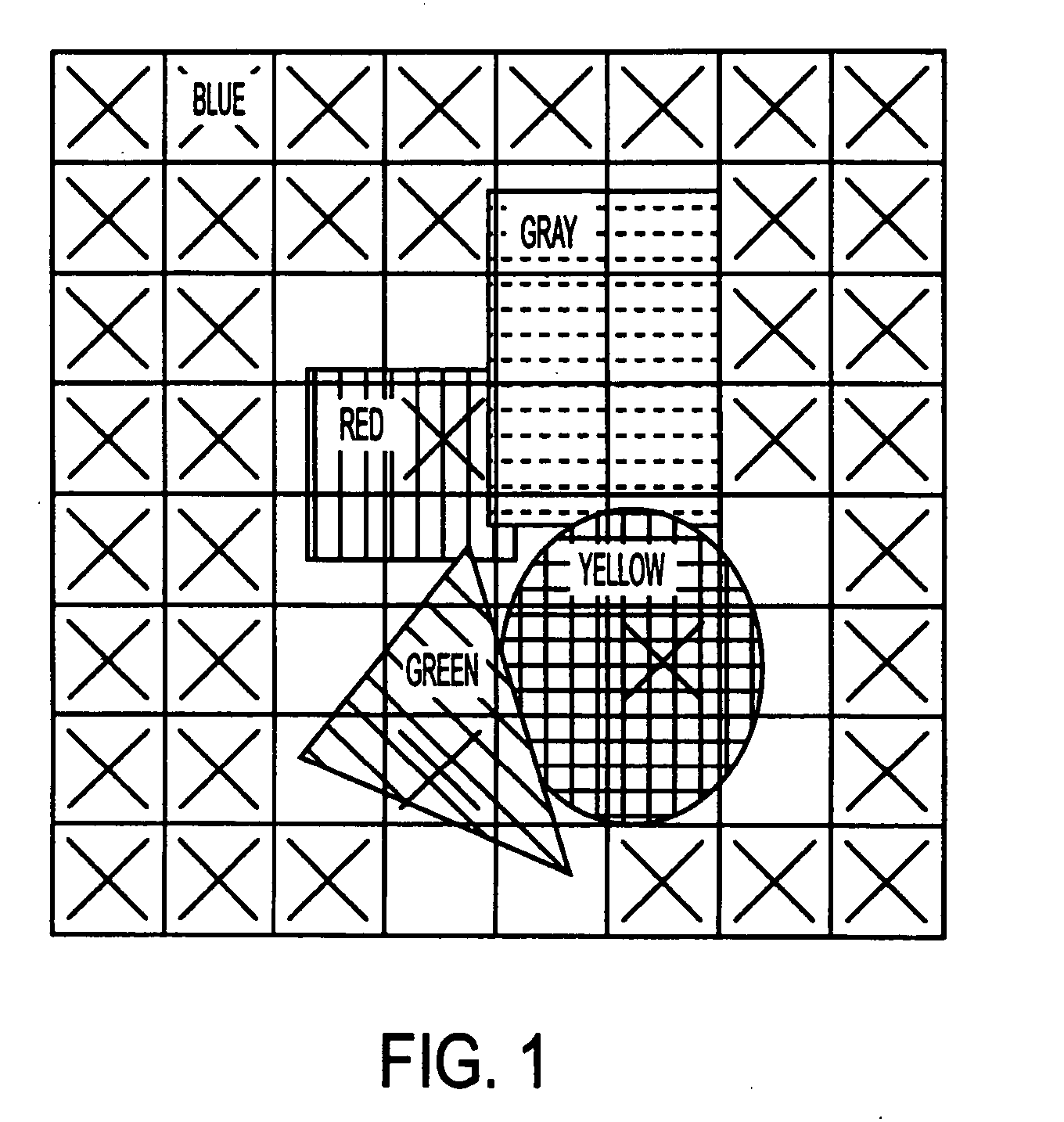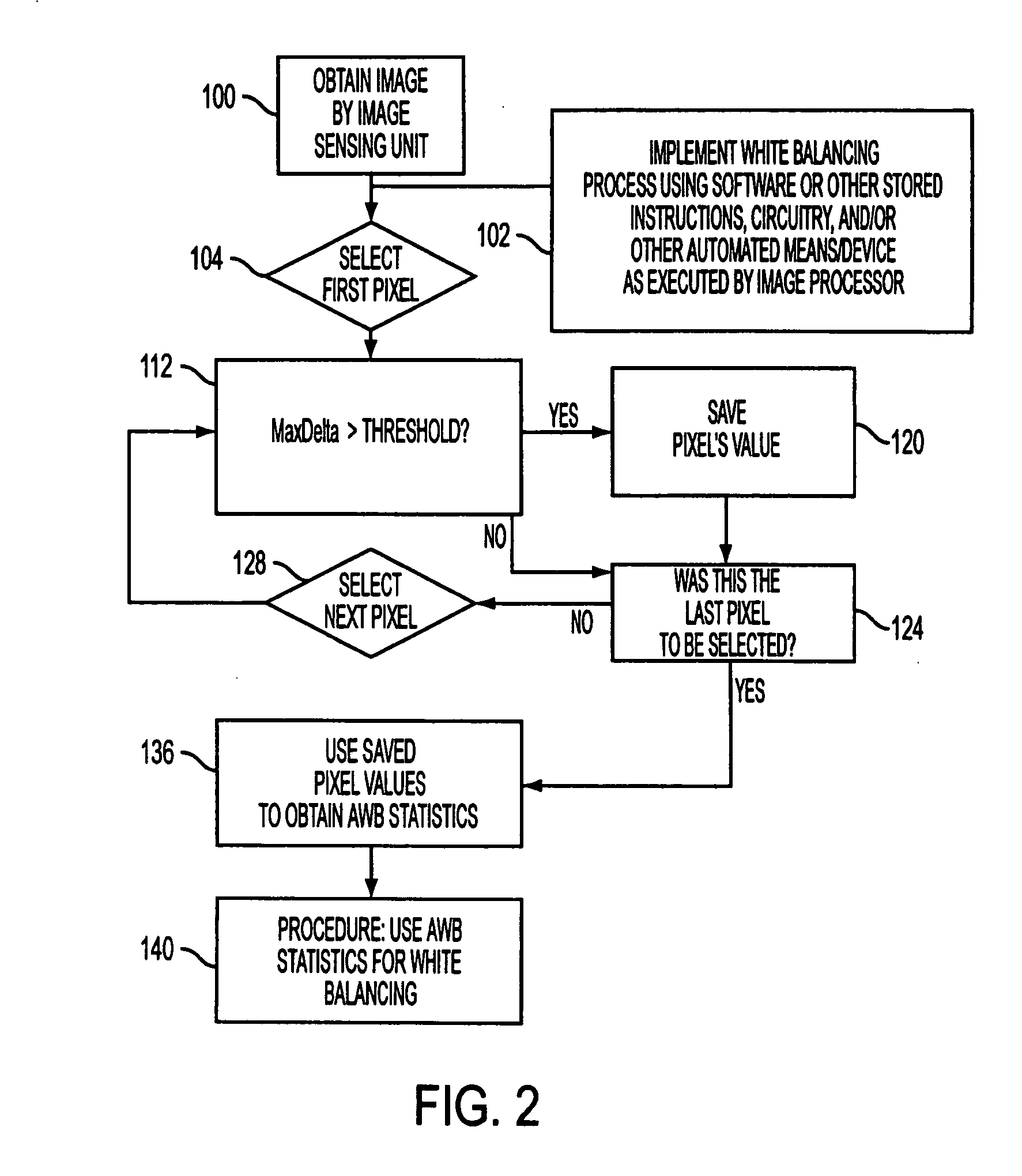Sampling images for color balance information
a color balance and information technology, applied in the field of color balance information sampling images, can solve the problems of difficult to obtain the same result with a camera or other imaging device, white balance, conventional approach failure, etc., and achieve the effects of minimizing computation and memory requirements, and avoiding the effect of monochromatic regions
- Summary
- Abstract
- Description
- Claims
- Application Information
AI Technical Summary
Benefits of technology
Problems solved by technology
Method used
Image
Examples
Embodiment Construction
[0020] In the following detailed description, reference is made to various specific embodiments in which the invention may be practiced. These embodiments are described with sufficient detail to enable those skilled in the art to practice the invention, and it is to be understood that other embodiments may be employed, and that structural and logical changes may be made without departing from the spirit or scope of the present invention.
[0021] The term “pixel” refers to a picture element in an image. Digital data defining an image may, for example, include one or more values for each pixel. For a color image, each pixel's values may include a value for each color, such as red, green, and blue.
[0022] The term “pixel cell” refers to a picture element unit cell containing a photosensor and devices, such as transistors, for converting electromagnetic radiation to an electrical signal. Typically, fabrication of all pixel cells in an imager will proceed simultaneously in a similar fashi...
PUM
 Login to View More
Login to View More Abstract
Description
Claims
Application Information
 Login to View More
Login to View More - R&D
- Intellectual Property
- Life Sciences
- Materials
- Tech Scout
- Unparalleled Data Quality
- Higher Quality Content
- 60% Fewer Hallucinations
Browse by: Latest US Patents, China's latest patents, Technical Efficacy Thesaurus, Application Domain, Technology Topic, Popular Technical Reports.
© 2025 PatSnap. All rights reserved.Legal|Privacy policy|Modern Slavery Act Transparency Statement|Sitemap|About US| Contact US: help@patsnap.com



